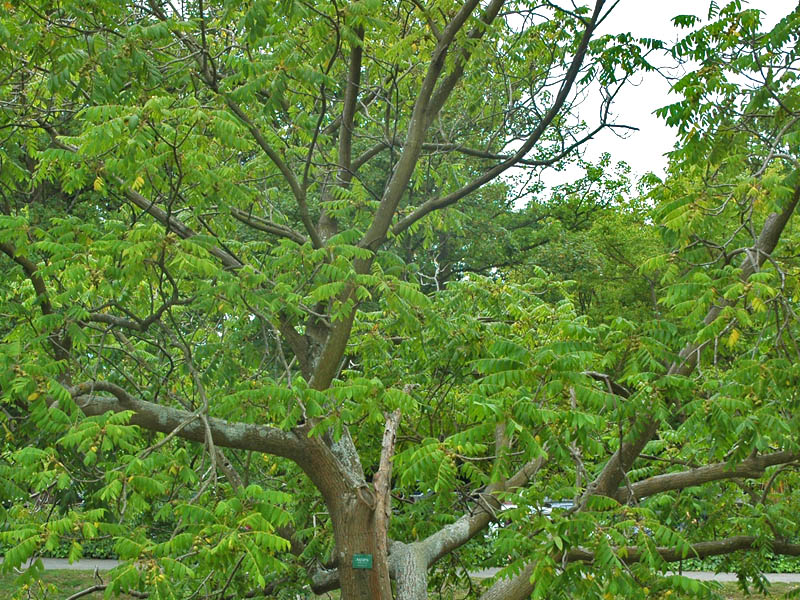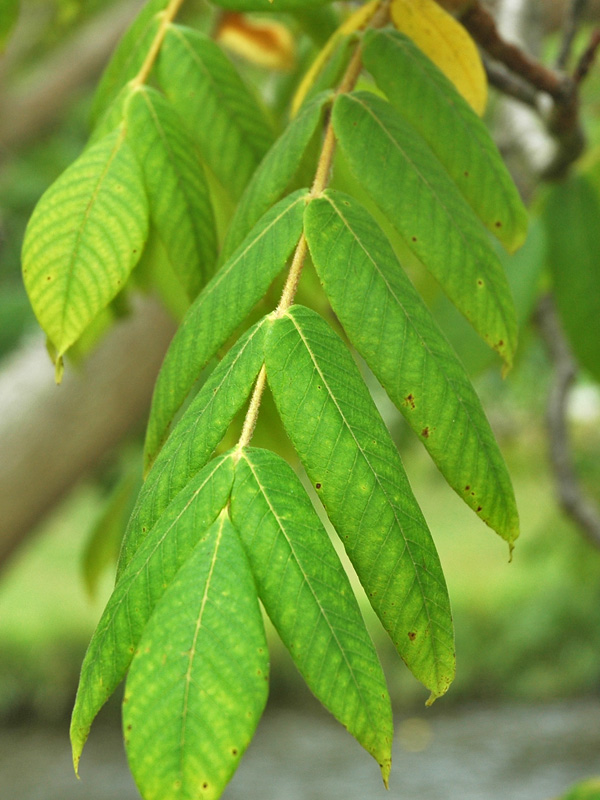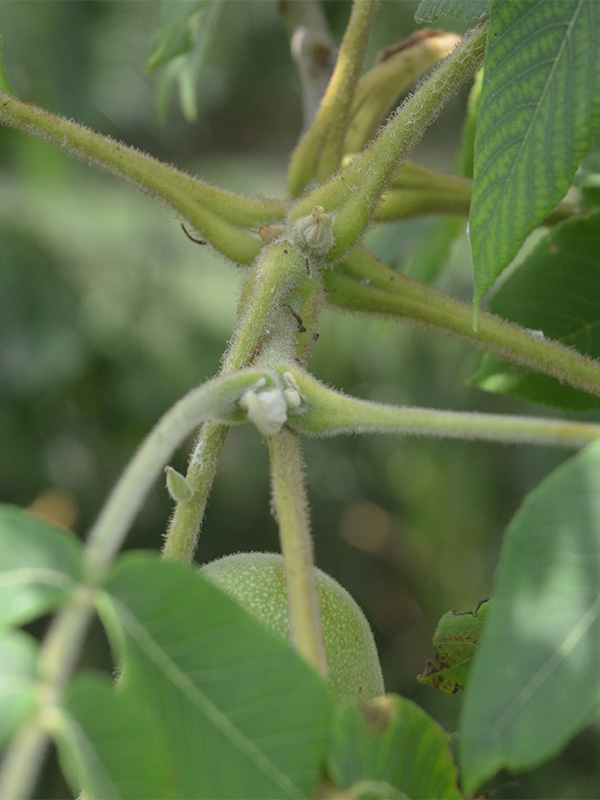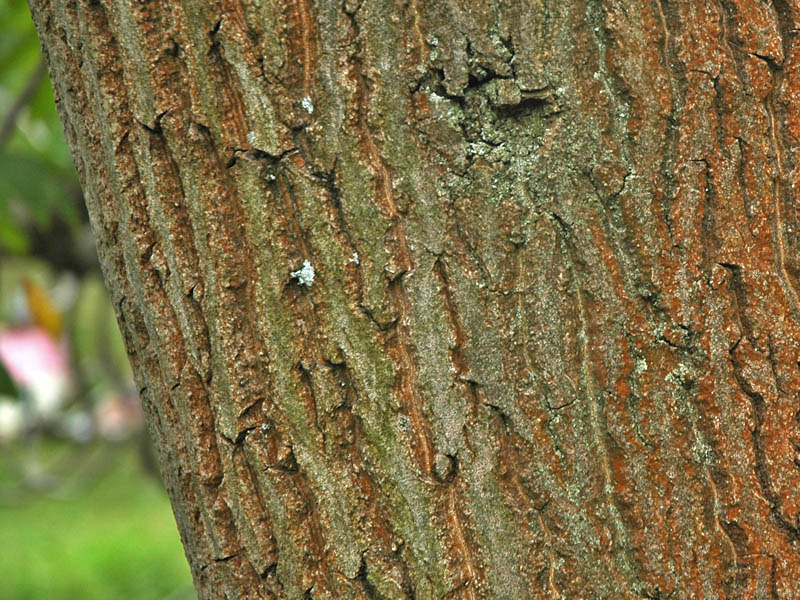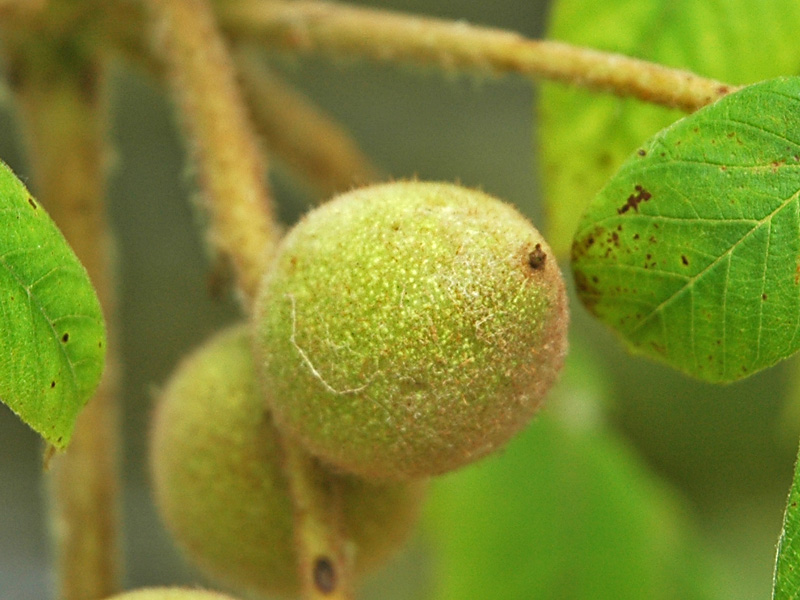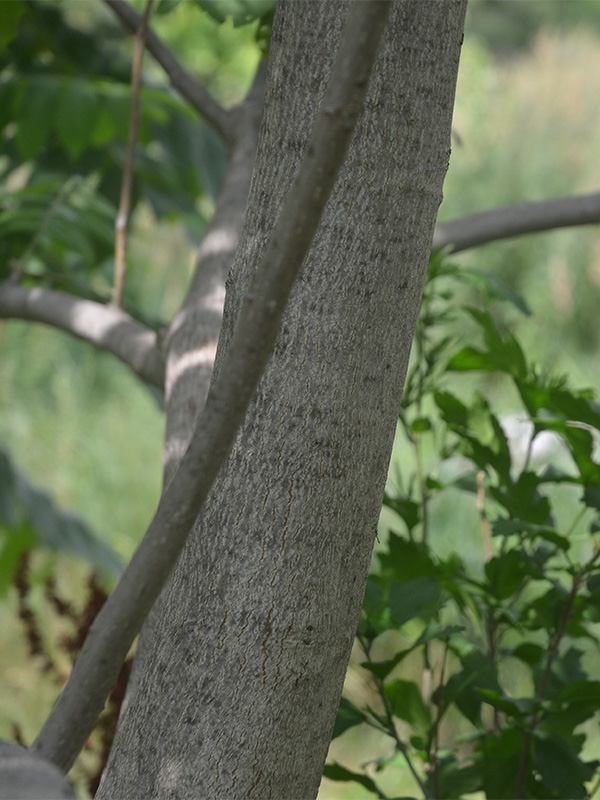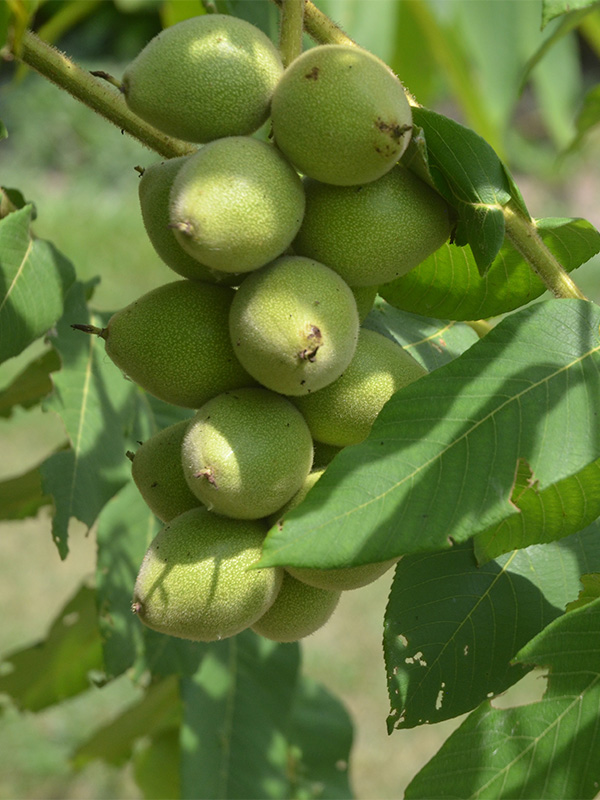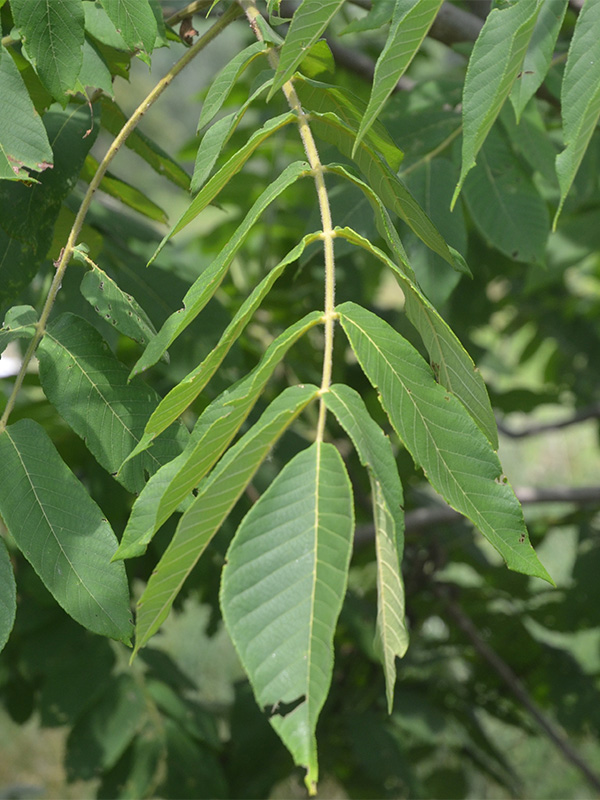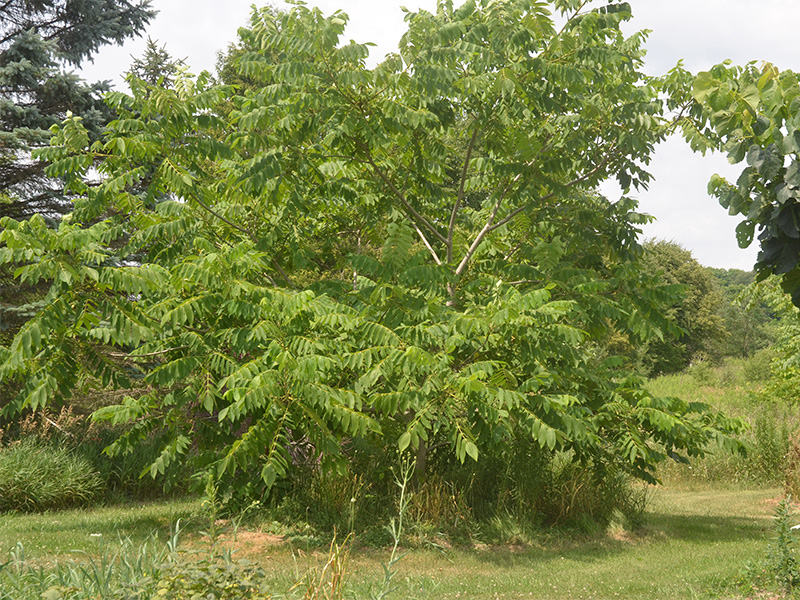| Shape | Tall, upright and broad. |
| Cultivation | Full sun. Well-drained soil. |
| Notable Specimens | The Living Center, Delaware, Ontario, Canada. |
| Habitat | Forests and forest edges. |
| Leaf Description | Pinnate, 50 - 90 cm long with 11 - 17 leaflets. Each leaflet is 7 - 16 cm long and 3 - 5 cm wide. |
| Flower Description | Male flowers are inconspicuous catkins that are produced in spring when new leaves appear. Female flowers are pistils. |
| Fruit Description | The fruit is a nut that is produced in bunches of 4 - 10. Spherical, 3 - 5 cm long and wide. Surrounded by a husk before it matures in autumn. |
| Colour Description | The bark is a light grey colour. The leaves are a yellowish-green. Male flowers are yellowish-green. Females flowers are pinkish-red. The fruit is green. |
| Texture Description | The bark is ridged or plated. |
